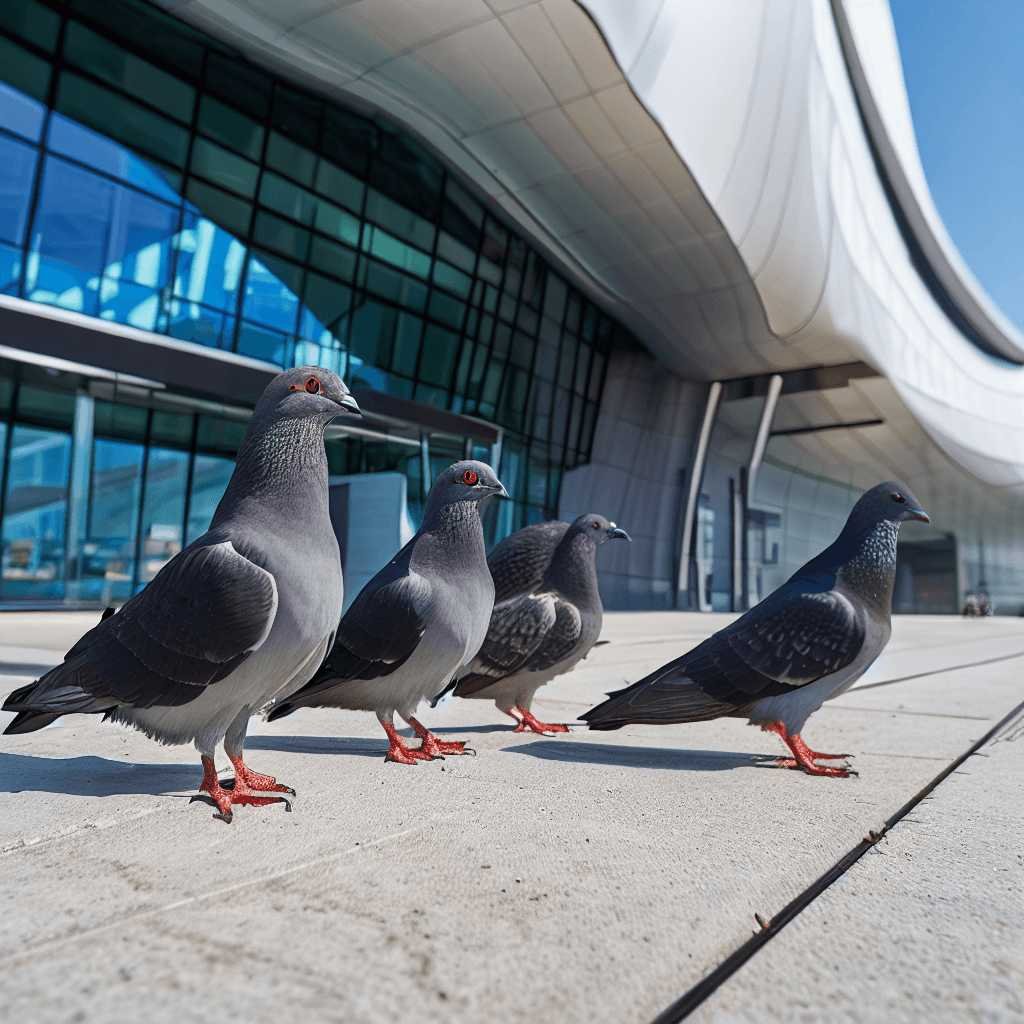Airport Bird Control: All Available Methods Explained
Written by Erick Wolf
Despite airports' best efforts to minimize potentially dangerous and damaging situations caused by airplane bird strikes, thousands still occur each year, making it necessary to find the most effective airport bird control method. Thankfully, danger to the passengers or substantial damage to the aircraft rarely results from most airplane scares involving birds.
Still, airports worldwide have many conservation and safety measures doubling as thoughtful airport bird control techniques. To minimize the impact on birds, avoid any potential problems, and refine bird avoidance procedures, conscientious airport officials continually monitor nearby wildlife.
In this article, we’ll take an in-depth look at airport bird control, including discussing why it’s important and identifying some of the most popular airport bird control methods today.
Why Use Bird Control in Airports?
The aviation industry has been plagued by birds for decades. Today, more than 40 collisions between airplanes and wildlife occur within the United States alone each day. The most common collisions, bird strikes, happen during aircraft take-off or landing when birds are sucked into rotating props or jet engines.
Birds and Airplanes
Although birds may seem minuscule in comparison to a large jet engine, they can, in fact, cause quite a bit of damage. Birds can be responsible for:
Destroying an airplane engine
Disabling the ground steering
Punching a hole in the airplane wing
Crumpling the nose cone of an airplane
It’s important to note that when bird strikes occur, jet engines can’t just swallow the birds and continue on their way. These strikes can be especially hazardous when it forces an aircraft into an emergency landing. In addition to raising safety concerns, the damages to the aircraft can also be quite costly.
Birds and Hangars
Runways aren’t the only place where birds are wreaking havoc at airports. In aircraft hangars, birds often leave their droppings, feathers, and other debris on floors and aircraft being serviced with their cowlings open as they nest and roost in the high ceiling rafters.
Unfortunately, the result can be dangerous and problematic when bird debris falls into delicate engine assemblies and parts. Additionally, maintenance and repair crew members must be on the lookout for the dangerous slip-and-fall hazards that bird droppings can create.
As a result, birds in aircraft hangars can cause multiple issues, including:
Unnecessary clean-ups
Maintenance delays
Aircraft damage
Slips and falls
Most Popular Airport Bird Control Methods
When airports are constructed, bird control methods should immediately be installed and integrated to avoid potential hazards. Various factors go into determining the best airport bird control method, including:
Types of birds in the area
The size of the airport
Available resources
Thankfully, installing bird deterrents during airport construction makes it more economical and simplified, as most contractors already have access to special tools and lift equipment.
Here are the most popular airport bird control methods available today.
Birth Control
The OvoControl pigeon control program is the most effective and humane solution to resolve a bird and pigeon problem. It is also effective in airports. The key to solving a chronic pigeon problem is to interrupt the constant breeding and repopulation of the flock with “birth control” for the birds.
The Drone Bird
A newer technology hitting airport tarmacs is the airport bird control drone. The drone has the realistic appearance and weight of its living counterpart but is a remotely controlled robotic bird of prey. The drone chases off birds using a combination of wing and silhouette movement, triggering the instinct of birds.
The drone bird effectively makes airspace safer by helping to reduce bird populations over time. While using a robotic bird that does not require food, shelter, or rest is beneficial, real falconry will be more effective in reinforcing the local threat and keeping birds away.
Laser
Using a strong contrast between the laser beam and the ambient light, avian dispersal lasers can startle birds. While lasers work as a safer alternative to airport bird control methods, they are limited during conditions with lighter ambient lighting. Additionally, avian dispersal lasers tend to be highly species-specific.
Dogs
Trained dogs are used in airports globally for tracking and chasing away birds. The fear instilled in the birds prevents them from nesting, feeding, and resting in the area. This airport bird control method only works when the dogs are working. Once the threat is removed, the birds will return.
Another threat about using dogs for airport bird control is they scare birds off in any direction, which can cause bird strikes on the runway if not appropriately managed.
Radar Systems
Operations can predict bird behavior using radar equipment to track the movement and density of bird flocks. Modifying plane behavior or sending wildlife specialists to remove birds are the only options once the radar detects birds in the area.
Although altering flight schedules can result in fewer bird strikes, it’s not always a feasible solution for busy airports across the globe.
Air Cannons
Air cannons create loud noises that disrupt the environment of birds, causing them to go airborne as they believe the danger is approaching. While these airport bird control methods can be effective, birds can become accustomed to the sounds over time and are no longer impacted
Airport Bird Spikes
Airport bird spikes come in various splay widths, ranging from one to ten inches, to help keep birds away from runway signs, radar equipment, and aircraft hangars. Spikes can help prevent perching in these areas of the airport, but undoubtedly, the birds will find a way to rest in other locations whenever possible.
Bird Netting
To prevent birds from landing or nesting, mesh netting creates a physical barrier. Bird netting can protect birds from semi-enclosed areas like overhangs and aircraft carriers. Although netting can be effective, it is not a save-all solution when it comes to airport bird control methods for obvious reasons.
Why Use OvoControl in Airport Bird Control?
When it comes to finding effective airport bird control methods, you’ll often find that it requires the use of multiple options to get the job done. Especially in high-traffic airports, you might have to get creative. Thankfully, OvoControl is the new solution to airport bird control.
How OvoControl Works
OvoControl is an edible, kibble-type bird birth control that birds eat, thinking it is food. The ability of a pigeon’s egg to develop fully becomes extremely limited by the compounds within the formula as the birds feed on OvoControl.
Used in chickens for enteric diseases for over 65 years, the active ingredient, nicarbazin, was discovered as birth control by accident. Researchers found nicarbazin interfered with the membrane needed in an egg’s development, the egg’s vitelline layer. As a result, OvoControl integrated nicarbazin to serve as a sterilizer for birds.
Final Thoughts
While there are a few different options for bird control methods at airports, they often require multiple solutions and can still not be entirely adequate. One of the most humane and practical solutions to bird population control in airports today is OvoControl. Its non-toxic active ingredient ensures humane treatment of the birds, while its multiple delivery options make it customizable to any bird population size.





